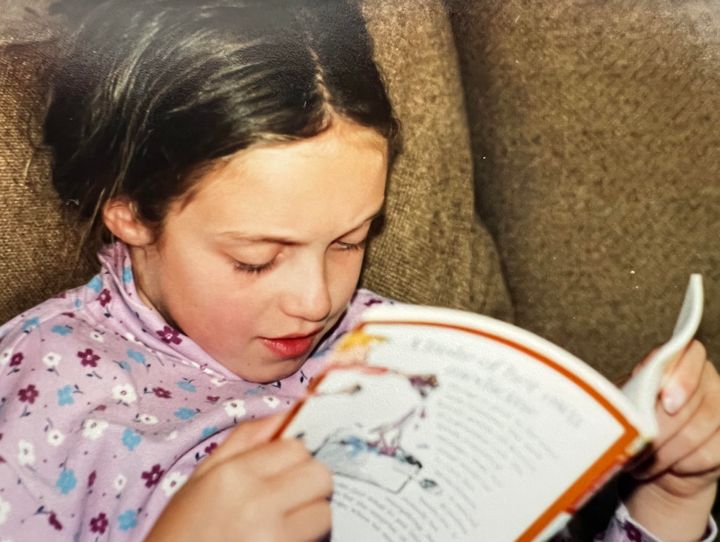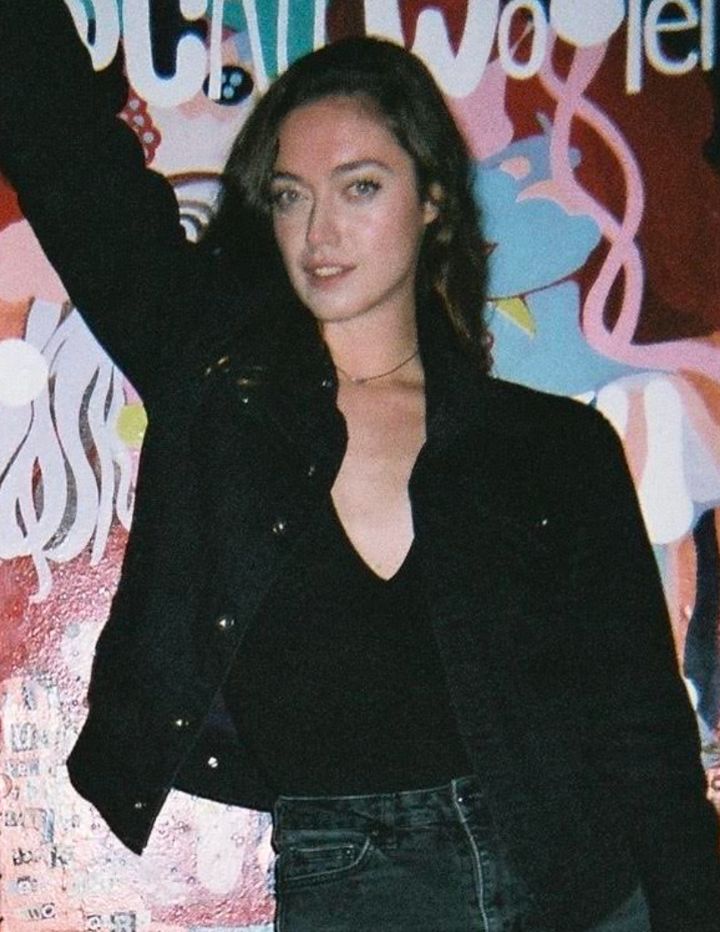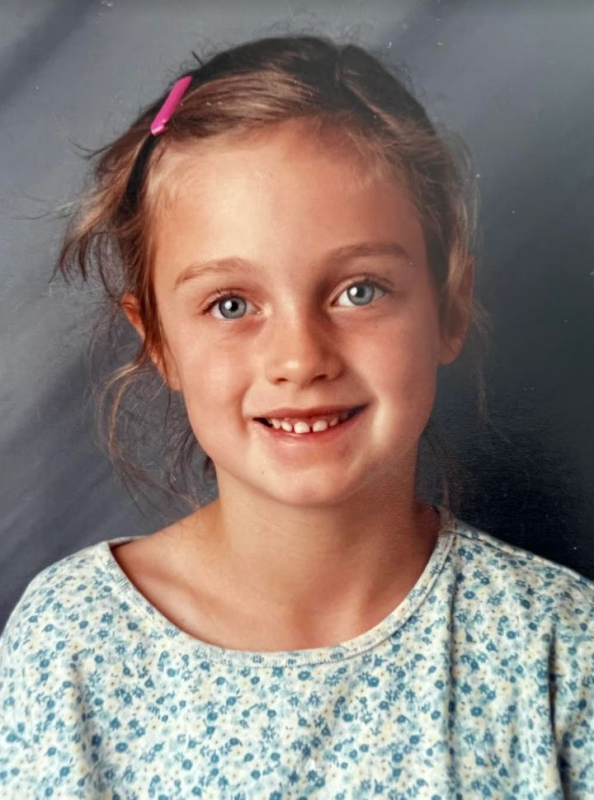News
My Daughter Was Being Bullied. I Thought It’d Eventually End — Until I Had A Chilling Realization.
Arriving early to pick up my daughter Nina at the elementary school, I pulled my car into a parking spot across the street and scanned the playground for her. Most of the boys charged across the playground in a hilarious Mad Max version of soccer. A handful of girls played four-square with a red playground ball. And the rest either dangled from the jungle gym or crouched underneath it in small clumps.
I spotted Nina sitting on one of the benches, back hunched, head down. One of the four-square players lobbed a sneering taunt in her direction. The other three players followed up with more. Nina didn’t move, so the player with the ball threw it at her. Nina lifted her face, grimaced — in pain or anger, I couldn’t tell — and shouted something back at the other girls.
The playground monitor materialized — where was she before? — and put her hands on her hips while she spoke to Nina. The other girls didn’t even try to cover their smirks. Then the bell rang, and the children lined up to go back inside. It was a miracle I didn’t wreck the car when Nina told me on the way home that the teacher had made her stand in front of the class and apologize for being disruptive at recess and for not respecting her classmates.
That day, my overwhelming desire was to take her back into my body, to hold her there where no one could reach her without first going through me. I wish I could say I swooped in and saved Nina from her tormentors, but I would have to accept failure — and acknowledge my own powerlessness — in order to do that.
The bullying began in earnest in second grade. The town was small, the school even smaller. Most of the children in Nina’s class had played at our house and ridden in our car and eaten the snacks we always brought to various events.
They were nice kids, we thought, but something changed over the summer between first and second grade. Each day our formerly lively daughter came home to us quiet, pale and withdrawn. For a while, Nina asked me why the girls were so mean to her, but my answer, my assurance that we loved her, was useless, because the real answer was that I didn’t know — I didn’t know! Nina’s first grade teacher had been at a loss as well, when I’d asked her the same question.
Since the beginning of first grade, I had visited Nina’s class once a week and listened to the children read aloud. Some were hesitant, making their way haltingly through “Hop on Pop.” Others moved quickly through “Frog and Toad” and were well into “Mr. Popper’s Penguins.” I thought each one was performing miracles.
I continued to volunteer in Nina’s second-grade classroom — “Frog and Toad” never gets old for me — but as I sat listening, watching a brow furrowed in concentration or a still-soft hand turn a page, I wondered about these children. I thought I knew them: One could burp the ABCs, another had a soft spot for babies and another was a fountain of fascinating, esoteric facts. I couldn’t reconcile their sweetness — they were so young — with the pain and destruction they had wrought. They were real, three-dimensional children, not cardboard-cutout villains, but still, whenever I thought about my daughter, all tenderness drained out of me, replaced by bafflement and, more and more, anger.
When I talked to Nina’s teacher about the playground incident, he said, “Nina is responsible for her own behavior.” True, and we would be the last people to deny that, but surely the teacher had witnessed—
But no, he insisted, he hadn’t.
The school counselor confirmed that our daughter was being treated badly — by students and teachers alike. He found it personally distasteful, he told me, but was not in a position to change it, and when I asked, he discouraged me from approaching the principal. “I wouldn’t expect a positive outcome there,” he said, without elaborating.
I tried talking with the parents. “There’s just something about Nina,” one said.
I turned to books about bullying for guidance. I tried to prepare Nina by coaching her, as suggested, to not show the bullies that she was hurt. It is the victim’s weakness and isolation that makes her a target, they said, and it is her show of pain that incites the bullies to torment her further. If she could just pretend that nothing was happening, that she didn’t care, the bullies would grow bored of their sport and move on. I sometimes wondered how those “experts” could live with what they were implying: that the bullies would move on to another target and that this was somehow an acceptable solution.
I taught cooperative games on the playground at recess — that way I could at least keep an eye on Nina. I joined the PTA, baked pies and brownies for every bake sale, volunteered as a chaperone for every field trip, showed up for the class Halloween party with a witch hat, green face paint and a whole cauldron bubbling with rage.
Third grade arrived as bleary-eyed as I felt. My daughter was visibly shrinking, her blue eyes shaded a dull grey, her shoulders permanently bent. I became a freak, a wild animal. When Nina’s third-grade teacher ridiculed her for using manipulatives in math class — “Only kindergarteners need those,” he announced, to the delight of the rest of the class — I welcomed the chance to go in and scream, first at him, and then at the principal. “Since when did humiliation become a teaching tool?” I demanded.
A welcome respite came for Nina in the form of the “Harry Potter” books, which she read over and over, lost in his world — and, for a few moments, no longer inhabiting her own.
On the first day of fourth grade, each student was provided with a spiral bound day-planner with the school’s newly updated bullying policy printed and highlighted inside the front cover: Bullying “will not be tolerated.” It was almost too good to be true.
It was too good to be true. Nina’s lunchbox tipped me off in November. After Nina came home from school, I opened it to wipe it out. It was full. Again.
“I’m just not hungry, Mom,” she told me when I asked.
I squatted down in front of her and took her hands in mine. “You’re not on trial, my Sweet Pea,” I said. I was looking up at her face as she stood next to the counter, next to the unopened yogurt, the still-wrapped sandwich, the container full of sliced cantaloupe — the evidence. Her long lashes shadowed her cheeks, so soft, so vulnerable. Her chin trembled.
“I need to know what’s happening so I can help you,” I said, and I shook my head to silence the voice that sneered at me: Seriously? Like you’ve helped her so much before. Tears dripped down Nina’s cheeks, her shoulders slumped, and she sank down into my lap. She curled into an impossibly tiny ball, and said from somewhere inside my arms, “It will only make it worse.”

Later, I called Nina’s teacher and explained that Nina was being attacked on the way to the cafeteria. “They’re pushing her into the snowdrifts and holding her there until she panics — the girls are doing this — and we need your help.” He was sympathetic, outraged even, and he suggested we meet with him and the other two class teachers to see if we could address the problem together. For the first time, I was hopeful that we might make some actual progress.
The day before the meeting, the phone rang. I picked it up and, without a greeting, the principal growled, “There’s no bullying in my school. I can see the playground from my window, and I know there isn’t any.” She canceled our meeting and forbade the teachers from discussing it with us.
The next day, my husband stalked into the principal’s office — no appointment — and gave her a piece of his mind using words that got her attention, like “duty,” “negligence” and “lawsuit.” It makes more of an impression when a father comes to school.
The principal agreed to have an adult accompany the children when they walked between the two schools — fat lot that would do, but it was something. Then three girls attacked Nina on the playground at recess. They knocked her down and hit her and kicked her while the rest of the crowd watched. At that moment, with absolute clarity, we knew what we needed to do — what we should’ve done right from the start. We got her out. Finally, we got her out.
Over the next few days, several mothers pulled me aside. Each one told me in a low, confidential voice that she was so relieved we had taken Nina out of school. Her child, she would say, had often come home in tears over what the other kids were doing to Nina. They felt terrible. It had been so very difficult for their kids, they said, and now it would be better.
For the first two weeks after we pulled Nina out, the incident on the school playground was the talk of the town, but it was just gossip. There was no real conversation.
One mother, in a feud with the school administration for her own reasons, maneuvered the principal into administering a survey to the student body in order to confirm the principal’s claim that there was no bullying. When asked if they had experienced cutting remarks, pushing or other aggressive acts at school, a majority of the students answered “yes.” The school administration responded by hiring a motivational speaker to teach the students how to identify bullies, as if they were just a few maladjusted kids — a performative way of abdicating responsibility and changing neither policy nor behavior.
Nobody asked me what I thought — probably a good thing, because I was drowning in so much guilt I could barely breathe, let alone speak. If I were a painter or a photographer, I could have filled a whole portrait gallery with the faces of the bullies, faces from school and dance class, from the pool and the playground, from the grocery store and the post office. Everywhere we went, every day, we saw those faces.
No, not the children. The adults: the bystanders who, by their inaction, gave tacit permission for the bullying. The onlookers who, by their silence, confirmed that the chosen victim, my daughter, was expendable. It would take a village to stop the bullies because, I learned, it takes a village to make one.

Why do bullies bully? Because they can. Bullying is about power, and in a sense, it is very democratic: The power of the bully comes from the people. It starts with an opening gambit, a first salvo. The would-be bully makes some sort of move, a taunt, a swipe or a snub. The test is not for the victim. It is to see how others will react: thumbs up or thumbs down. In many ways, the victim is powerless. It doesn’t matter how she responds. Only the bystanders, the audience, can give a red or green light.
Onlookers play a vital role, and therefore, they must be included for a solution to have any real effect. An example of a community shutting bullying down occurred in 1993, when a rash of hate crimes swept through a small city in Montana. Someone threw a brick through the window of a house where a Jewish boy had displayed a picture of a menorah. The community rejected the attack. The local paper published a full-page picture of a menorah. In days, 10,000 menorahs lined the city’s windows, with the message: not in our town. The police chief said, “Silence is acceptance.”
Why do children bully? Because they have learned from adults who model it for them, who single out and disparage difference. A small but beneficial step schools and families can take is to include as wide a range of people as possible in their lives. Invite neighbors to your home. Seek out guests from all walks of life. Encourage them to tell their stories and model listening with courtesy and curiosity.
Another way of doing this is to read widely. It is normal human instinct to be on guard or even act defensively when we are faced with the unfamiliar, but we can learn — and teach our children — to honor difference. Instead of defining ourselves by who we are not, we can show children that we are all bound together in some way, and we can choose to make that connection positive.
When bullies came for my daughter, our village made their choice, which left us with only one: We moved away. Only by gaining physical distance have we all been able to rekindle our internal sparks.
For the longest time, I searched for a way to help Nina heal. I often felt powerless — and overwhelmed with guilt at not being able to protect her. I had to fall back on the only thing I had left to offer: love. Her wounds healed, but scars remain.
My daughter’s experience with bullies is a foundational part of who she is — highly protective of misfits, underdogs and outsiders, but also forever wary. After we moved, Nina found friends in our new town. But even now, two decades later, there is not a single room that she doesn’t scan before entering and ask: Will the people in it give a thumbs up or a thumbs down?
Lea Page’s work has appeared in The Guardian, The Washington Post, The Rumpus, and River Teeth, among others. She is the author of “Parenting in the Here and Now” (Floris Books, 2015) and lives in the mountain west with her husband and a small circus of semi-domesticated animals.
Do you have a compelling personal story you’d like to see published on HuffPost? Find out what we’re looking for here and send us a pitch at pitch@huffpost.com.
Read more

